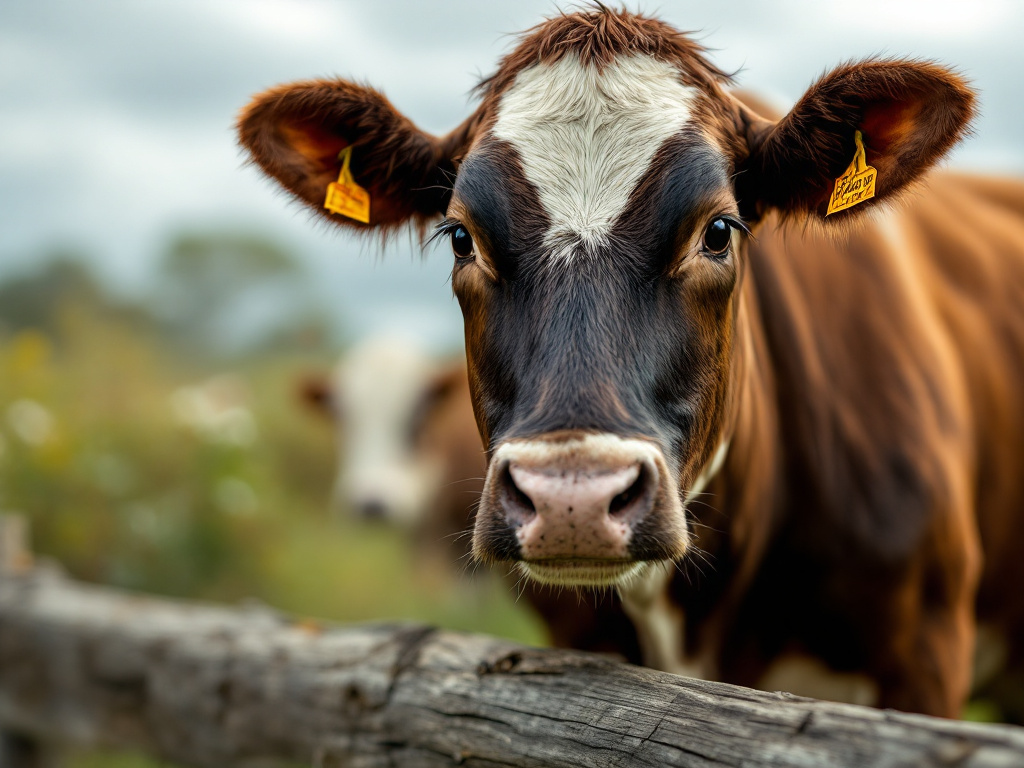Image generated by flux-ai.io & content generated by ChatGPT Version 4o-mini
Combatting Horn Flies: A Growing Concern for Osceola’s Cattle Farmers
Residents of Osceola County, Florida, know that agriculture plays a vital role in our community. With a significant number of cattle farms in the area, it’s crucial for local farmers to stay informed about pests that threaten their livelihoods. One of the most notorious offenders is the horn fly, a small but mighty pest that can wreak havoc on cattle health and farm profits.
What Are Horn Flies?
Horn flies (scientific name: Haematobia irritans irritans) are tiny, blood-sucking insects that primarily feed on cattle. These pests were brought to North America from Europe in the late 19th century and have since become widespread across the continent. They are especially troublesome in the southeastern U.S., including Florida, where warm weather allows them to thrive year-round.
Why should this matter to you? Each horn fly can take up to 38 blood meals a day, leading to significant blood loss for the cattle. This not only affects the cows’ health—leading to reduced weight gain and milk production—but can also decrease the quality of leather from hides, which impacts the entire beef industry.
The Economic Impact
The annual financial toll of horn flies on the U.S. beef cattle industry is staggering, with estimates ranging from $700 million to $1 billion lost each year. Additionally, farmers spend around $60 million on insecticides to control these pests. For cattle farmers in Osceola, these numbers translate to real costs, affecting everything from profits to livestock health.
The stress caused by horn flies can lead to increased heart rates in cattle and reduced grazing time, which means they can’t eat as much grass. This is particularly concerning for local farmers who rely on the health of their herds for survival.
Managing the Problem
Farmers have several strategies to combat horn flies, and it’s becoming increasingly clear that relying solely on insecticides may not be enough. Many horn flies have developed resistance to common treatments, which means that an integrated pest management approach is essential.
This includes using a variety of control methods, such as:
– Insecticide-impregnated ear tags: These are attached to cattle to provide a slow release of insecticide, but should be used judiciously to minimize chemical exposure.
– Biological controls: Natural predators, like certain beetles and wasps, can help reduce horn fly populations in a more environmentally friendly manner. Careful management is needed to ensure the success of these methods, as they require knowledge of pest biology and environmental conditions.
– Mechanical traps: Innovative designs allow farmers to capture horn flies as they leave their cattle, significantly reducing their numbers without the use of chemicals.
What Can You Do?
For residents of Osceola, staying informed about horn flies and their management can directly impact the local economy. If you know a farmer or work in agriculture, sharing this knowledge can help improve cattle health and farm productivity in our community.
Additionally, if you own livestock, consider discussing pest management options with local agricultural extension offices or veterinarians to ensure your cattle are healthy and productive. By exploring various pest management strategies and maintaining communication with local experts, we can help protect our cattle and support the agricultural backbone of Osceola County.
In conclusion, while horn flies are a persistent problem, awareness and action can make a difference. With smart management strategies that prioritize integrated pest management, Osceola’s farmers can continue to thrive in the face of these challenging pests.
References
EENY490/IN885: Horn Fly Haematobia irritans irritans (Linnaeus) (Insecta: Diptera: Muscidae). (n.d.). Ask IFAS – Powered by EDIS. https://edis.ifas.ufl.edu/publication/IN885

